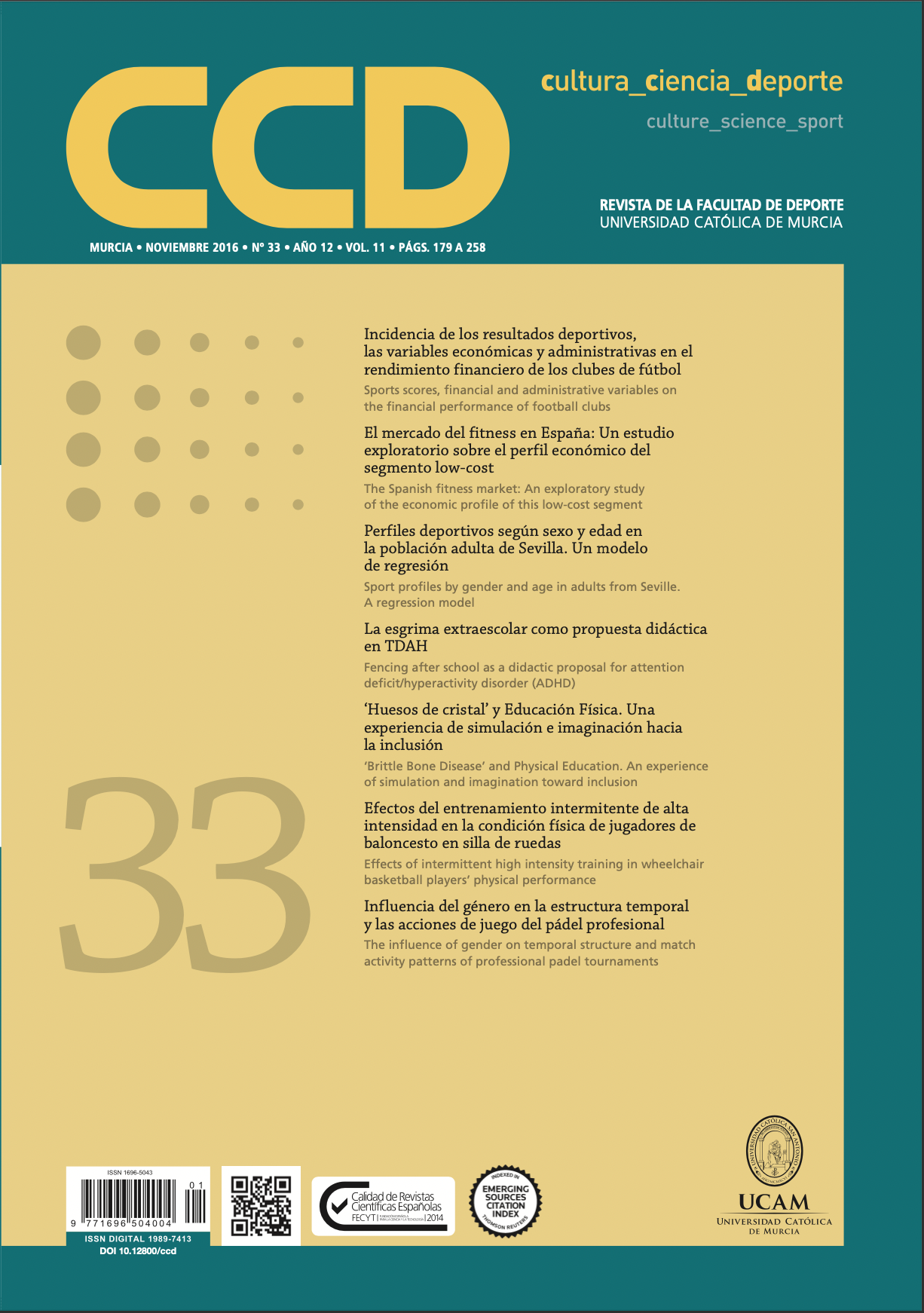El mercado del fitness en España: Un estudio exploratorio sobre el perfil económico del segmento low-cost. (The Spanish fitness market: An exploratory study of the economic profile of this low-cost segment).
DOI:
https://doi.org/10.12800/ccd.v11i33.764Abstract
El fenómeno de la irrupción de los centros low-cost en España comenzó en 2010 durante la etapa de recesión económica. A pesar de su rápido crecimiento y el impacto que ha tenido en el mercado del fitness, apenas ha sido analizado. El objetivo del estudio fue describir las variables de identificación, estructura corporativa y perfil económico-financiero del segmento low-cost de fitness, analizando las diferencias entre empresas con y sin accionistas. Se llevó a cabo una búsqueda en el sistema de análisis de balances ibérico (SABI), del cual se extrajo información de una muestra de 25 de los 39 operadores con presencia en España. Los resultados informan de un conjunto de compañías jóvenes, de las cuales solo un 40% posee accionistas y participadas. En este segmento, el mercado está atomizado en torno a cinco grandes cadenas, en su mayoría extranjeras, que concentran el grueso de los centros, la facturación y el empleo. Se observa mucha diversidad respecto a identificación y estructura corporativa, sin embargo en relación al perfil económico-financiero se observa una tendencia común: la inmensa mayoría de los operadores analizados presenta un resultado del ejercicio y una ratio de rentabilidad económica en negativo y su endeudamiento está próximo al 100% de los activos totales.
Palabras clave: Industria, estado de forma, segmentación, mercado.
===
Abstract
The emergence of low-cost gyms in Spain took place in 2010 during an economic recession. Despite this rapid growth and the impact it has had on the fitness market, research in this area is scarce. The aim of the study was to describe the identified variables, corporate structure and economic-financial profile of this low-cost segment of fitness, analysing the differences between companies with and without shareholders. The study conducted a search of the Iberian balance sheets analysis system (SABI), which extracted information from a sample of 25 of the 39 operators present in Spain. The results suggested a set of young companies, of which only 40% have shareholders and subsidiaries. In this segment, the market is fragmented around five large chains, mostly foreign, which account for the bulk of the centres, sales and employment. Much diversity is observed in the corporate structure, however, regarding the economic and financial profile, a common trend is observed; the majority of analysed operators close their fiscal year in losses, have a ratio of negative profitability and debt is close to 100% of total assets.
Key words: Industry, fitness, segmentation, market.
Downloads
Published
How to Cite
Issue
Section
License
The authors who publish in this journal agree with the following terms:
- The authors retain the copyright and guarantee the journal the right to be the first publication of the work as well as licensed under a Creative Commons Attribution License that allows others to share the work with recognition of the authorship of the work and the initial publication in this journal.













